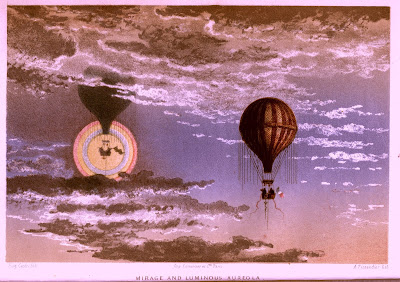James Whistler and Dante Gabriel Rossetti led the craze for collecting blue and white china in the 1860s and some of their pieces survive, like this Chinese "ginger" jar. Whistler must have appreciated the porcelain painter's skill in achieving the wide range of tones in its cobalt blue underglaze decoration.
 |
Kangxi lidded jar, c.1662-1722
© Victoria & Albert Museum |
Blue and white ceramics frequently appear in the background of his paintings, although Whistler's best known relationship with Chinese porcelain may be the famous Peacock Room which he painted for the display of Frederick Leyland's collection of Kangxi china, along with his "
Princesse du pays de la Porcelaine".
 |
La Princesse du pays de la porcelaine James Whistler 1863-5
© Freer Gallery of Art, Washington DC |
Asked to repaint the flowers on the room's leather wall panels from pink to yellow - better to offset the 'valuable blue china', Whistler entirely repainted the panels with his wonderful scheme of golden peacocks,
Harmony in Blue and Gold, completely eclipsing the the collection itself.
 |
| Harmony in Blue and Gold: the Peacock Room James Whistler 1877 © Freer Art Gallery, Washington D.C. |
According to artist Thomas Armstrong, "The cobalt blue of the pots suffered terribly from juxtaposition with Whistler's paint, made of Prussian or Antwerp blue. …the colour did not serve as a happy background for people or furniture, and it was fatal to the blue china."
Section of the Peacock Room James Whistler 1877
© Freer Art Gallery Washington D.C
Murray Marks, the dealer who supplied these wealthy patrons with their Oriental porcelains, wrote that "No-one can say a word against the almost miraculous beauty of the decorations which …was quite wonderful and entrancing, but it was complete of itself, not a background for porcelain or for anything else."*
Some twenty years later, Whistler's friend Louise Jopling painted a china collection in a quieter domestic setting, sometimes called "Washing the China" and now appropriately at the Lady Lever Art Gallery.
 |
Blue and white: washing the china Louise Jopling 1896
© National Museums of Liverpool |
* see "The Holland Park Circle" Caroline Dakers
Other artists also collected Persian wares, like these, of which more in my next blog.








